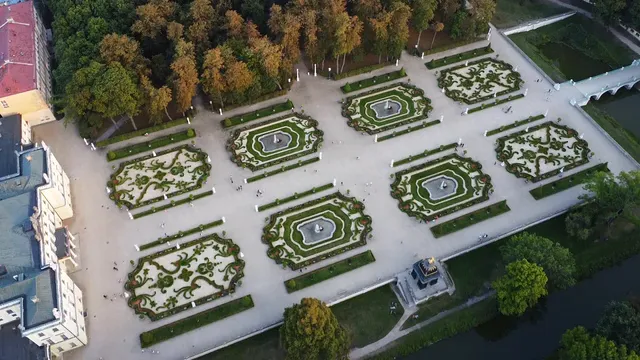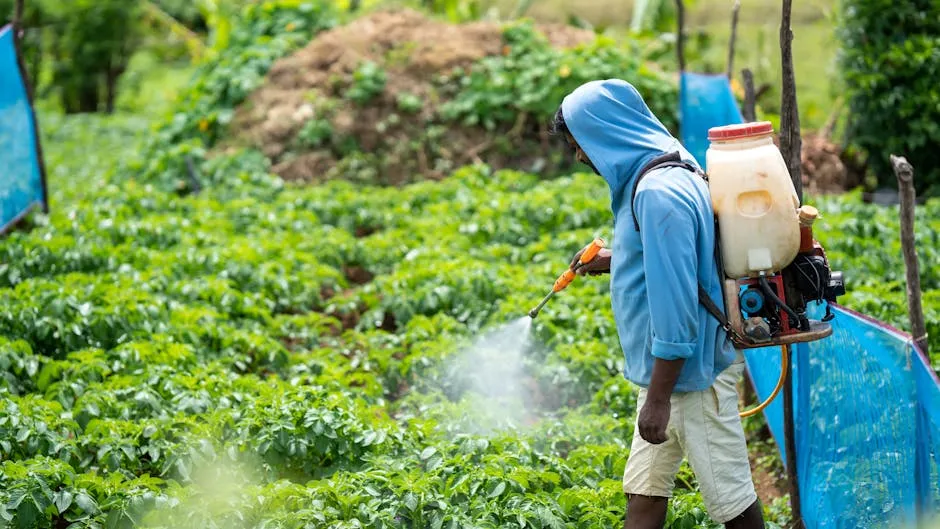

Vegetable Garden Layout: A Comprehensive Guide to Maximizing Your Space
Introduction
An effective vegetable garden layout is crucial for maximizing yield. It ensures your plants thrive and remain healthy. Proper planning not only simplifies gardening tasks but also enhances your overall experience. In this guide, you’ll find various strategies and tips to create your optimal garden layout.
Summary and Overview
When planning your vegetable garden layout, consider several key factors. Location plays a significant role in sunlight exposure, which should ideally be around eight hours per day. Choose plants suited to your climate and ensure proper spacing to promote healthy growth. Careful planning leads to improved accessibility, making maintenance easier and watering more efficient.
Additionally, a well-thought-out layout can enhance plant growth and yield. This guide will cover practical tips on choosing the right location, designing your layout, and ensuring accessibility. We will also discuss plant spacing, companion planting, and seasonal strategies to help you achieve a flourishing garden. Get ready to transform your gardening experience!
Companion planting can significantly increase your garden’s yield and health. Learn more about companion planting strategies.
Choosing the Right Location
Choosing the right location for your vegetable garden is essential for success. Sunlight is a key factor. Most vegetables thrive with at least eight hours of direct sunlight daily. Without enough light, plants may stretch and produce less fruit. Check your garden space throughout the day to see how sunlight moves.
Next, consider soil quality. Good soil drains well and has the right pH. You can test your soil using kits available at garden centers. Ideally, your soil should be loamy, rich in nutrients, and have a pH between 6.0 and 7.0. A reliable Garden Soil Test Kit can help you determine whether your soil is up to snuff!
Water drainage is another crucial aspect. Avoid areas that retain water after heavy rainfall. Low spots can create frost pockets, where cold air settles, damaging sensitive plants.
Research shows that about 60% of crops require full sun for optimal growth. So, take the time to assess your garden site, ensuring it meets these conditions.
Evaluate your space, and you’ll provide your plants with the best environment for growth.

Designing Your Garden Layout
When it comes to garden design, various layouts can help you maximize space and yield. Traditional row gardening is common, where plants are placed in long, straight lines. This method makes it easy to manage crops but can waste space.
Raised beds offer several advantages. They improve drainage and can warm the soil earlier in the spring. Plus, they reduce soil compaction, promoting healthier root growth. However, they may require more upfront effort to build. You can find a great Raised Garden Bed to get started!
Square foot gardening is another popular choice. This method divides the garden into small squares, allowing you to plant different crops in each section. It’s space-efficient and great for small areas. Average yields can increase by 20% using this method due to better spacing and crop diversity.
Square foot gardening can significantly enhance your gardening experience by maximizing space efficiency. Discover how to implement square foot gardening.
Consider what layout suits your gardening style best. Each option has its pros and cons, so choose one that fits your needs. Grab a piece of paper and sketch out your proposed layout. This simple action can clarify your vision and lead to a thriving garden.

Garden Pathways and Accessibility
Clear pathways are vital for maintaining your vegetable garden. They allow easy access for tasks like watering, weeding, and harvesting. Without proper paths, you risk damaging plants and compacting the soil.
Aim for pathways that are at least 2 feet wide. This width accommodates wheelbarrows and allows you to move freely. You can create pathways using various materials. Wood chips provide good drainage and are eco-friendly. Gravel offers a sturdy, low-maintenance option. Grass paths can blend beautifully with your garden but may require more upkeep. Consider using Garden Pathway Gravel for a clean look!
Accessibility is crucial, especially for mobility-impaired gardeners. Ensure paths are level and stable to prevent trips or falls. Studies show that up to 30% of a garden’s yield can be affected by accessibility challenges. Consider your garden’s layout and make adjustments for easy navigation.
Take a moment to assess your garden’s accessibility. Are your pathways wide enough? Are they made from suitable materials? Enhancing accessibility can lead to a more enjoyable gardening experience for everyone.

Plant Spacing and Companion Planting
Proper plant spacing is essential for healthy growth and higher yields. Each type of vegetable has its recommended spacing. For example, tomatoes thrive with 18-24 inches between plants, while carrots need about 3 inches apart. Following these guidelines can prevent overcrowding, which often leads to poor air circulation and increased pest problems.
Companion planting is a fantastic strategy to enhance your garden’s health. This method involves planting certain crops together to benefit each other. For instance, marigolds can deter pests from tomatoes while attracting beneficial insects. Other successful pairings include basil with peppers, which can improve flavor and deter harmful bugs. Why not plant some Marigold Seeds to get started?
However, overcrowding can hinder growth. Plants that are too close compete for nutrients, sunlight, and water, ultimately reducing your harvest. Successful companion pairs can increase your yield by up to 20%.
Understanding companion planting can significantly improve your garden’s productivity. Explore effective companion planting strategies.
Research various combinations to maximize your garden’s potential. Understanding the benefits of companion planting can transform your vegetable garden into a thriving ecosystem. Start exploring these combinations today, and watch your garden flourish!

Seasonal Planning and Crop Rotation
Seasonal planning and crop rotation are vital for maintaining healthy soil. Understanding your growing seasons, especially frost dates, is the first step. Knowing when to plant helps maximize your garden’s potential. Many vegetables thrive in specific seasons, so timing is crucial.
Crop rotation benefits your garden significantly. It reduces pests and diseases that thrive in the same soil year after year. By rotating crops, you disrupt their life cycles, which can lead to healthier plants. Statistics indicate that implementing crop rotation can enhance soil health by up to 30%, making it a key strategy. Learn more about crop rotation.
Crop rotation is essential for maintaining soil health and preventing pests. Understand the importance of crop rotation for healthier vegetables.
A sample crop rotation schedule can guide your planning. For instance, alternate between legumes, such as beans, and root vegetables like carrots. In one year, plant beans in one section. The next season, shift to carrots. This practice enriches your soil and boosts overall yields.
To keep track of your crop rotations, consider maintaining a Garden Journal. Document what you plant and where, along with the dates. This simple tool will help you remember your rotations and improve your gardening success over time. By planning ahead, you’ll ensure a thriving vegetable garden season after season.

Watering Strategies and Irrigation Systems
Watering methods are essential for your garden’s success. Hand watering offers control, but it can be time-consuming. Drip irrigation, on the other hand, delivers water directly to the roots, conserving moisture and promoting healthy plants. This method can reduce water consumption by up to 50% compared to traditional methods. Consider getting a Drip Irrigation Kit to simplify your watering process!
Drip irrigation systems are an efficient way to manage water in your garden. Learn more about drip irrigation systems.
Consistency in moisture is key for healthy growth. Vegetables need regular watering, especially during dry spells. Mulching around plants helps retain soil moisture, reducing the need for frequent watering. This practice also suppresses weeds, benefiting your garden further. Explore our mulching guide for more tips.
When selecting an irrigation system, consider your garden size. Smaller gardens may benefit from soaker hoses or handheld watering cans. Larger spaces might require a drip system for efficiency. Evaluate your layout and choose the best option to keep your plants hydrated. A Handheld Watering Can is perfect for those small spots that need a little TLC!
Before planting, create an irrigation plan. Knowing your garden’s needs will save time and effort later. A well-planned watering system ensures your vegetables thrive, leading to a bountiful harvest.

Pest Management and Plant Protection
Managing pests organically is essential for a thriving vegetable garden. You can use various methods to keep pests at bay without harmful chemicals. For instance, neem oil is a natural pesticide that targets many common garden pests. Insecticidal soap also works wonders on soft-bodied insects like aphids and spider mites. These organic solutions are effective and reduce the risk of harming beneficial insects. Grab some Neem Oil Organic Pesticide to keep those pests away!
Why not add some flowers to your garden? Planting flowers attracts pollinators and beneficial insects, like ladybugs, that prey on harmful pests. Marigolds, for example, are known to deter nematodes and other pests while brightening your garden. A diverse plant selection can disrupt pest populations and promote a balanced ecosystem.
Crop diversity plays a crucial role in pest management. By rotating different types of crops each season, you can reduce the chances of pests establishing themselves. Research shows that organic methods can reduce pests by up to 90%. Implementing these strategies can lead to healthier plants and increased yields.
Curious about organic pest management? Dive into research and explore resources tailored to your growing needs. Your garden will thank you!

Conclusion
Thoughtful vegetable garden layout is vital for gardening success. By applying the strategies discussed, you can create a flourishing garden that meets your goals. Utilizing garden planning tools or apps can make this process even easier. Start mapping out your ideal vegetable garden today, and enjoy the benefits of your hard work!
Please let us know what you think about our content by leaving a comment down below!
Thank you for reading till here 🙂
All images from Pexels



